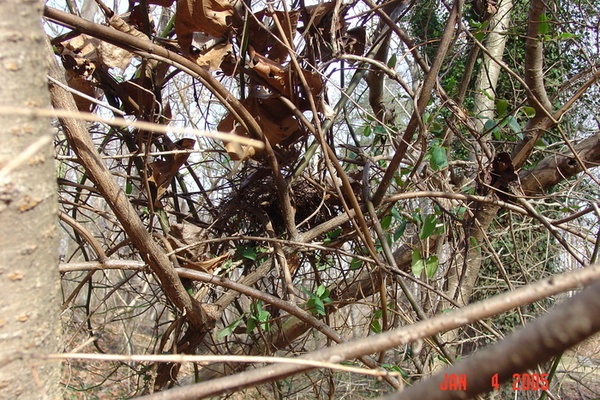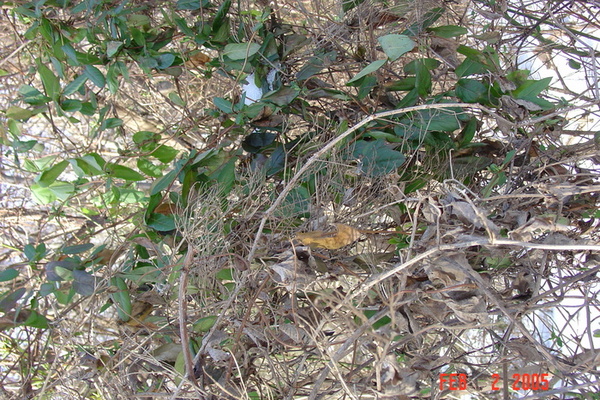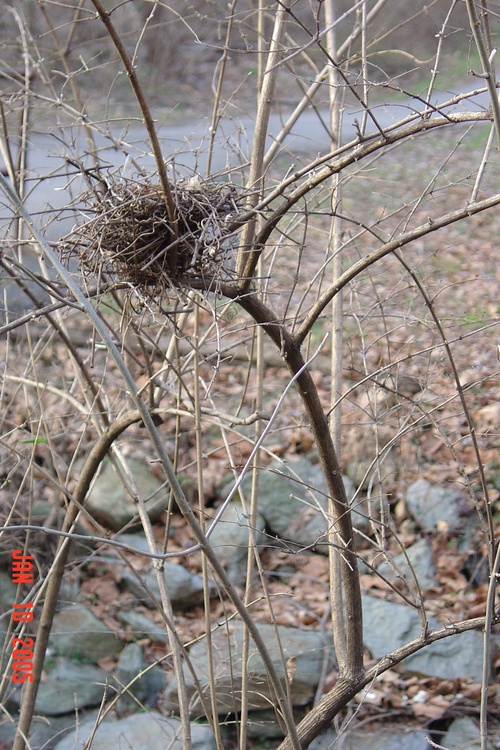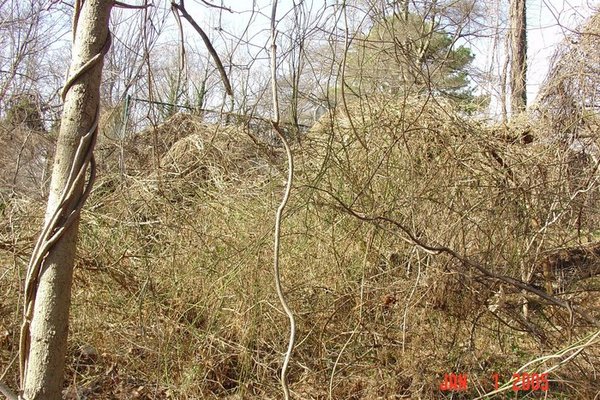

Bird Nest Habitat and Invasive Plants
Page 2 of 2
A Balancing Act for Sligo
With their sturdy branches, bush honeysuckle and mature multiflora rose (both invasive) offer birds a strong support for the nest. Leaves of surrounding vines such as the Japanese honeysuckle (an invasive) and the common greenbrier (a native) help hide the nest. Multiflora rose is an especially popular nesting site for two of our virtuosic mimics: Mockingbird and gray catbird.
Nest in multiflora rose & japanese honeysuckle, Jan 4, 2005, Parkside slope


Birdcover of porcelainberry and Japanese Honeysuckle, probably section 6


Removal of invasive shrubs and vines no doubt eliminates a source of nest sites for our low-nesting birds. When invasive vines and shrubs are thoroughly removed from a site, it can leave little understory behind for birds to nest in. The question becomes whether enough native vines such as greenbrier and shrubs like mapleleaf viburnum, arrowwood, and spicebush remain to provide cover for nests. When we are confronted with a large and exclusive cover of multiflora rose (such as the hill between Flora Lane and the Beltway), or of bush-honeysuckle (such as the slope north of Piney Branch), we should consider staggering the removal over several years. This way, bird-nesting habitat will persist while native plants return to cleaned-up areas.
Nest in bush honeysuckle & other, Jan 10, 2005, Flora Lane


Greenbrier serves as bird cover. Parkside slope below basketball court.


A major reason invasive plants are thriving is that deer tend to eat native plants and leave the invasives intact. If Park and Planning takes no steps to reduce the deer population, native shrubs will probably not be able to make a comeback. In this case, it will make sense to leave some invasive shrubs and vines to provide good habitat for our nesting birds.
Photos by Sally Gagne. Text by Sally Gagne and Michael Wilpers.
Sources: C. Robbins, ed., Atlas of the Breeding Birds of Maryland and the District of Columbia (Univ. of Pittsburgh Press, 1996); Hilton Pond Center for Piedmont Natural History, www.hiltonpond.org; C. Dowd, "Effect of Development on Bird Species Composition in Two Urban Forested Wetlands in Staten Island, New York," J. Field Ornithology, 63/4, 1992; J. Danoff-Burg, Introduced Species Summary Project, Columbia Univ., http://www.columbia.edu/itc/cerc/danoff-burg/invasion_bio/inv_spp_summ/invbio_plan_report_home.html; M. Moran, Study of Northern Virginia Ecology, http://www.fcps.edu/StratfordLandingES/Ecology/home.htm